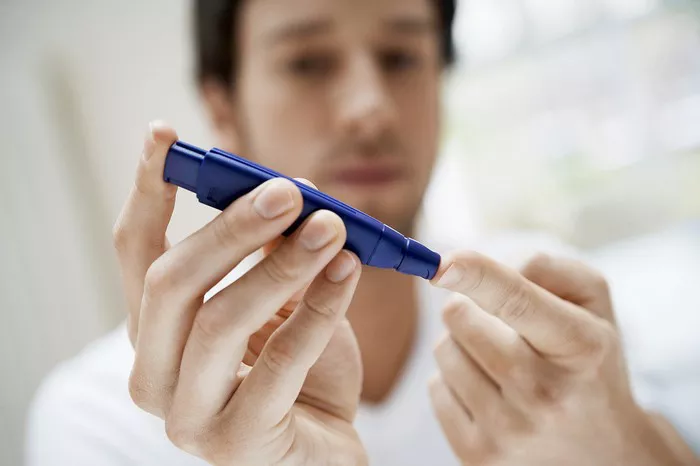Diabetes, a chronic condition characterized by high blood sugar levels, requires careful management, especially in hospital settings where health professionals must monitor and regulate patients’ diets closely. Among the myriad factors influencing diabetic care, nutrition stands as a cornerstone in maintaining stable blood glucose levels and preventing complications. Hospitalized individuals with diabetes often necessitate tailored dietary plans to accommodate their medical needs and facilitate recovery. In this article, we delve into the intricacies of the diabetic diet within hospital environments, exploring its components, importance, and the collaborative efforts of healthcare teams in ensuring optimal patient outcomes.
Understanding Diabetes: A Primer
Before delving into the specifics of a diabetic diet in hospital settings, it is crucial to grasp the fundamentals of diabetes itself. Diabetes mellitus encompasses a group of metabolic disorders characterized by elevated blood glucose levels, resulting from either insufficient insulin production, ineffective insulin utilization, or both. The two primary types of diabetes are type 1 and type 2, each with distinct etiologies and treatment approaches.
Type 1 diabetes typically manifests in childhood or adolescence and arises due to an autoimmune destruction of insulin-producing beta cells in the pancreas. Consequently, individuals with type 1 diabetes rely on exogenous insulin administration to regulate blood sugar levels effectively. Conversely, type 2 diabetes, which often develops later in life, involves a combination of insulin resistance and relative insulin deficiency. While lifestyle modifications, such as dietary changes and exercise, form the cornerstone of type 2 diabetes management, some patients may also require oral antidiabetic medications or insulin therapy.
The Role of Diet in Diabetes Management
Diet plays a pivotal role in managing diabetes by directly influencing blood glucose levels and promoting overall health. For hospitalized individuals with diabetes, dietary interventions serve as integral components of their treatment plans, aiming to achieve glycemic control, prevent complications, and support recovery. The overarching goals of a diabetic diet in hospital settings encompass:
Glycemic Control: Maintaining stable blood glucose levels is paramount in preventing acute complications, such as hyperglycemia or hypoglycemia, and mitigating the risk of long-term complications, including cardiovascular disease, neuropathy, and retinopathy.
Nutritional Balance: Balancing macronutrient intake—comprising carbohydrates, proteins, and fats—ensures sustained energy levels, optimal tissue repair, and metabolic homeostasis.
Individualization: Recognizing the heterogeneous nature of diabetes, dietary plans must be tailored to each patient’s specific needs, considering factors such as age, weight, comorbidities, medication regimen, and personal preferences.
Education and Empowerment: Providing patients with comprehensive dietary education empowers them to make informed choices, actively participate in self-care, and adhere to dietary recommendations beyond their hospital stay.
Achieving these objectives necessitates a collaborative approach involving dietitians, physicians, nurses, and other allied healthcare professionals working in concert to optimize patient outcomes.
Components of a Diabetic Diet
A well-designed diabetic diet comprises a balance of carbohydrates, proteins, fats, fiber, vitamins, and minerals, meticulously orchestrated to regulate blood glucose levels while meeting nutritional requirements. Key components of a diabetic diet in hospital settings include:
Carbohydrates: As the primary macronutrient influencing blood sugar levels, carbohydrates require careful monitoring and distribution throughout the day. Hospitalized individuals with diabetes often benefit from carbohydrate counting, a method that involves estimating the carbohydrate content of meals and matching insulin doses accordingly. Emphasizing complex carbohydrates—such as whole grains, legumes, fruits, and vegetables—over simple sugars promotes sustained energy release and mitigates postprandial glycemic spikes.
Proteins: Protein-rich foods contribute to satiety, support muscle maintenance, and facilitate wound healing—an essential consideration in hospitalized patients. Sources of lean protein, such as poultry, fish, tofu, legumes, and low-fat dairy products, feature prominently in diabetic meal plans, complementing carbohydrate intake while minimizing the risk of excessive fat consumption.
Fats: While essential for hormone synthesis, cellular function, and fat-soluble vitamin absorption, dietary fats require moderation, particularly in individuals with diabetes at risk of cardiovascular disease. Emphasizing sources of unsaturated fats—such as olive oil, avocados, nuts, and seeds—over saturated and trans fats promotes heart health and metabolic stability.
Fiber: Dietary fiber exerts beneficial effects on glycemic control, lipid profiles, and gastrointestinal function, making it a cornerstone of diabetic nutrition. Incorporating fiber-rich foods, including whole grains, fruits, vegetables, and legumes, into meals and snacks helps regulate blood glucose levels, promote satiety, and support digestive health.
Micronutrients: Essential vitamins and minerals, such as vitamin D, magnesium, and chromium, play crucial roles in glucose metabolism and insulin sensitivity. While a well-balanced diet typically provides these micronutrients, supplementation may be necessary in certain cases, guided by nutritional assessments and clinical indications.
Practical Considerations and Challenges
Implementing a diabetic diet in hospital settings presents various practical considerations and challenges, necessitating proactive strategies and interdisciplinary collaboration. Some common considerations include:
Meal Planning and Standardization: Hospital kitchens often employ standardized menus and portion sizes to facilitate meal planning and ensure consistency in nutrient delivery. Collaborating with dietitians and culinary staff enables the customization of meal options to accommodate individual dietary preferences, cultural considerations, and therapeutic requirements.
Nutritional Assessment and Monitoring: Conducting comprehensive nutritional assessments, including dietary histories, anthropometric measurements, biochemical analyses, and functional evaluations, informs individualized dietary interventions and facilitates ongoing monitoring of nutritional status throughout hospitalization.
Medication Management: Coordinating dietary recommendations with medication regimens—such as insulin therapy, oral antidiabetic agents, and other medications—averts adverse interactions, minimizes the risk of hypoglycemia, and optimizes therapeutic outcomes.
Patient Education and Support: Empowering patients with diabetes through structured educational programs, interactive counseling sessions, and practical skills training fosters self-management skills, enhances treatment adherence, and promotes long-term health outcomes beyond the hospital setting.
Despite these proactive measures, several challenges persist in implementing and sustaining effective dietary interventions in hospital environments. These challenges may include:
Variability in Patient Needs: Hospitalized patients with diabetes exhibit considerable variability in their nutritional requirements, clinical presentations, and treatment responses, necessitating individualized approaches tailored to each patient’s unique circumstances.
Resource Constraints: Limited resources, including staffing shortages, budgetary constraints, and logistical challenges, may hinder the provision of comprehensive dietary services and impede the delivery of optimal care to patients with diabetes.
Cultural and Dietary Preferences: Accommodating diverse cultural backgrounds, dietary preferences, and religious practices presents logistical and practical challenges in menu planning, meal preparation, and patient satisfaction.
Transition of Care: Ensuring seamless transitions of care from hospital to community settings requires coordinated efforts among healthcare providers, patients, and caregivers to sustain dietary interventions, monitor progress, and prevent adverse outcomes post-discharge.
Addressing these challenges demands a multifaceted approach encompassing interdisciplinary collaboration, innovative strategies, and patient-centered care principles.
Conclusion
The diabetic diet holds paramount importance in hospital settings, serving as a cornerstone of comprehensive diabetes management and facilitating optimal patient outcomes. By addressing individual nutritional needs, promoting glycemic control, and empowering patients with education and support, healthcare teams can navigate the complexities of diabetes care effectively. Through interdisciplinary collaboration, proactive strategies, and a patient-centered approach, hospitals can provide tailored dietary interventions that promote health, wellness, and resilience in individuals with diabetes, both during their hospital stay and beyond.
In navigating the nutritional needs of hospitalized individuals with diabetes, healthcare professionals uphold the principle of primum non nocere—first, do no harm—by prioritizing safe, effective, and evidence-based dietary interventions that promote healing, restore well-being, and enhance quality of life. As the landscape of diabetes care continues to evolve, ongoing research, clinical innovations, and collaborative efforts will further advance our understanding and management of this prevalent chronic condition, fostering a brighter, healthier future for individuals with diabetes worldwide.



























